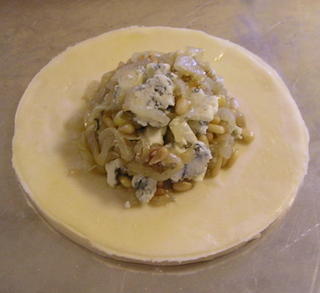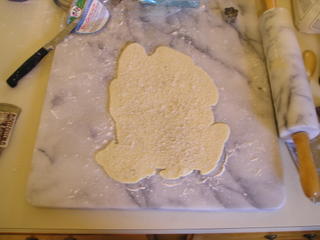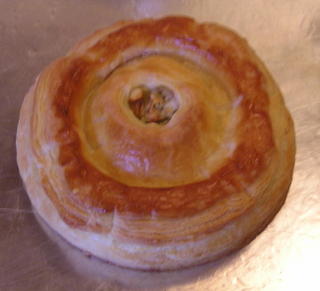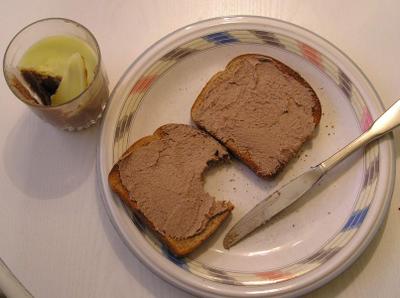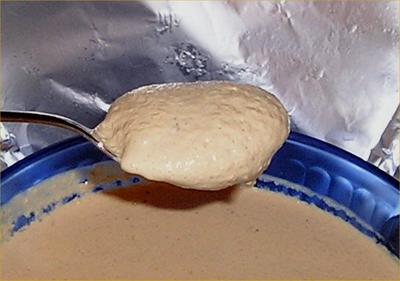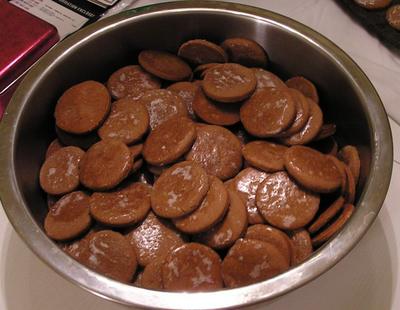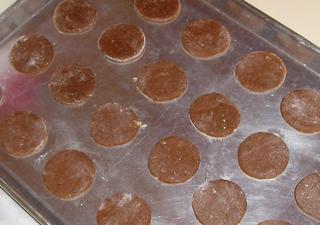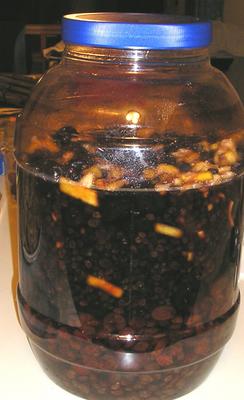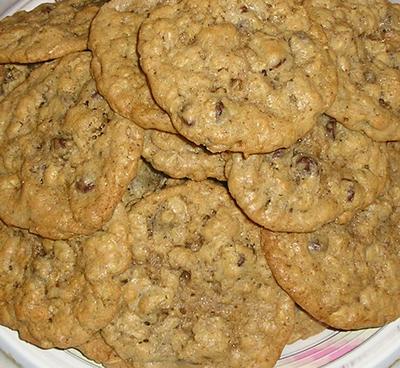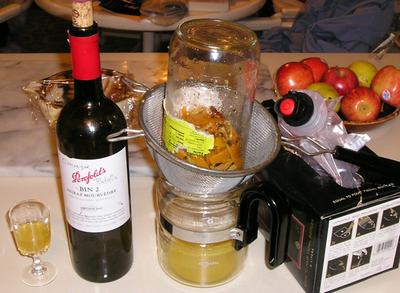The Melting Pot
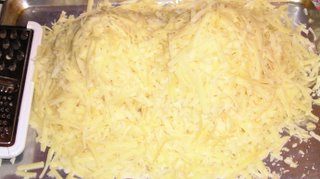
It seems a little silly to write about making fondue. I'm sure that if you live in or regularly visit a country that includes part of the Alps, then perhaps you see fondue on a regular basis, but there are no alps around here, and fondue may be the epitome of the food fad. Sadly, I am not enough of a food historian to be able to pinpoint with any exactitude the apex of the American fondue obsession, but I think that I'm on fairly safe ground when I say that at some point two or three decades ago, on any Saturday evening, you could find hundreds of hostesses across the country whipping up fondues for their dinner guests. Surely hundreds of thousands of fondue sets were given as wedding gifts. It is, of course, possible that there were only a thousand or so such sets and that they were recidivistically regifted around the country, but the continued proliferation of fondue pots, stands, and forks in consignment stores and at yard sales suggests otherwise.
I'm pretty sure that the first time I experienced fondue was at a party being hosted by the parents of my first girlfriend (the whole entanglement, to the extent there was any tangling, did not last very long, as I turned out to be insufficiently forward; this perhaps should have been a clue to me, but I was determinedly dense in those days; some would say not much has changed on that front, except that I'm dense in other areas, but let's not go there). They had both a cheese and a chocolate fondue going simultaneously, and if memory serves, they were both good, but I viewed them more as curiosities than anything else.
I don't remember exactly when I acquired my own fondue set, but it seems likely that it would have been a wedding present, since by the time I married, the fondue craze would have been well behind us, and my family is always at least a few years behind the rest of the world, culinarily speaking. I remember my Aunt Beverly, for example, discovering crepes sometime in the early nineties.
The recipe and process for fondue are fairly well known. Almost every recipe I've seen begins with the instruction to cut a clove of garlic in half and rub it all over the inside of a heavy pot. Well, there'll be none of that here. I like garlic too much to be satisfied with having a clove of it rubbed on the inside of a pot. Especially a smooth pot. If you rub a clove of garlic across a piece of toasted coarse bread to make bruschetta, then you get a lot of garlic. On a smooth pot, you might get a whiff, but then again, you might get virtually nothing except a nod to tradition, and while I have nothing against tradition (excuse me while I stop and make sure there are no bolts of lightning headed in my direction), fondue is not one of my traditions, so I can do whatever I like with it.
And, you know, right now I'm really wondering why you can't make your fondue as some sort of variant on a mornay sauce. You know: roux, wine, simmer, cheese, dip, etc. After all, a fondue is traditionally thickened with cornstarch, so what would be so wrong with going down the veloute route (I was going to put the acute accent on the end of velouté, but the idea of pronouncing it "veloot root" amuses me way more than it has any reason to do)? Perhaps I'll try that sometime. Because, you know, there are all these dire warnings in fondue recipes about how to stir. Apparently, stirring in a traditional circular pattern doesn't melt the cheese properly or causes the sauce to separate or turns your wooden spoon into a giant cheese lollipop or summons a demon from one of the less threatening dimensions of hell. It's difficult to get rid of such demons because your kitchen is inevitably a happier place than where they come from. There's no fire or brimstone there, but they're still using rotary phones, and all the coffeehouses serve lukewarm coffee with artificial creamer. Anyway, some people will tell you to stir your fondue in a figure eight and others say to make a zig zag pattern. I don't think either of these suggestions go far enough. Figure eights and zig zags are still repetitive patterns, and if circles form lumps or demons or whatever, then it seems reasonable that other repetitive patterns would give you similar problems, though perhaps of a smaller magnitude. I say no repetition whatsoever. Stir your fondue by making the figures of numbers. And to make sure you aren't repeating yourself, I suggest either π or e. Here is a page with some links to places that will give you pi to several hundred thousand digits, which should be sufficient for any amount of fondue. I'm sure there are similar pages for e, and I hope you won't think I'm being irrational if I tell you to find them yourself. Advanced chefs should stir according to the digits of i. Chefs who fear the math may instead trace out the letters of Shakespeare's sonnets, though that is a risky maneuver, given the regularity of iambic pentameter.
I'd been wanting to make some fondue for some time, and since V. was home from his consulting gig in Ethiopia yesterday, I figured I could make a relatively easy and informal dinner by making a fondue with bread and vegetables to dip into it. I was going to go old school, too, and use kirsch and Gruyere and Emmenthaler and maybe even the zig zag stirring method, but when I got to Giant, the Gruyere was $9.99 a pound, and while I stand in firm solidarity with the need of my bovine brethren (just let it go, ok?) to make a living, I'm relatively certain that the cows are seeing almost none of that money. Why they don't at least organize is beyond me, but since they're not getting the money either way, I figured I would save myself some money by getting the cheese at Costco. I ended up paying as much as I would have at Giant, but I also ended up with three times as much cheese. Costco had Emmenthaler but not Gruyere, so I boldly substituted Jarlsberg and launched into "He's a Rebel." As it happens, breaking into song in the middle of Costco on a late Saturday afternoon will garner you a large share of uneasy looks, but I figure that's because I forgot to bring my backup singers (The Anapestiquettes), and people are not used to hearing "He's a Rebel" as a bass baritone solo, even with perfect intonation. Still, everyone was impressed enough to back away from me and give me a clear path to the checkout, which just goes to show that true talent can't be kept down.
When you have too much cheese, the best thing to do is grate it all and freeze whatever you're not using. Then you've always got some grated cheese, which is, of course, of great culinary value. I mixed the two cheeses together. They work pretty well as a team.
I'm going to give you my recipe here, but you might want to make some adjustments. I had already grated the cheese and had the wine nearly to the simmer when I realized that I am living with a man who has no cornstarch. I think I must have thrown my own cornstarch away before I moved in, and since I use it very rarely, I never noticed that I didn't have any until it was too late. I substituted instant flour, and that worked well enough. The fondue did eventually break, but not until we were both pretty well stuffed. Cornstarch might have kept it together longer. Anyway, it was yummy. Also, this recipe makes way too much for two people, so if you're going to make it or something like it, then you'll want to invite another couple of people over. None of our tables is really small enough to have four people comfortably dipping into the fondue pot at the same time, but I'm working on getting V. to make some sensible furniture changes, including replacing the large breakfast nook table (which is mainly used to hold piles of unopened mail or racks of cooling cookies) with a table that will seat four and only four. Fondue seems like too much fun not to share with more people, unless, of course, you're cooking for a date, in which case, you'll be using your fork to feed your companion, and you'll enjoy that more if it's just the two of you.
Fondue
1.75 c. dry white wine (I used Fisheye Pinot Grigio, mainly because of the cool label, though it made a good table wine to go along with the dinner)
2 cloves garlic, finely minced or pureed
2 cups (generous) of grated Jarlsberg
2 cups (also generous) of grated Emmenthaler
2 T. instant flour
2 T. sherry
Black pepper
Put the wine and the garlic in your fondue pot (if the bottom is heavy enough) or another heavy saucepan over medium heat until it reaches a simmer.
Toss the grated cheeses and the instant flour together in a bowl until they are well mixed.
When the wine reaches the simmer, add a handful of grated cheese and begin stirring in the manner of your choice.
Continue to add the cheese, a handful at a time, without rushing, until it is all incorporated. Stir in the sherry and grind some black pepper into it and stir that in, too. If you weren't using your fondue pot, transfer the fondue to the fondue pot, and put it over your flaming Sterno.
You can dip whatever you like into the fondue. Cubes of lightly toasted baguettes are traditional and a good choice. In addition to the bread cubes, I parboiled some broccoli and cauliflower florettes, and I put out some grape tomatoes, which I had wisely not parboiled. If you're an advanced user, you can put out cubes of another cheese. I didn't actually do that, though I was sorely tempted to cube a tiny bit of the Gorgonzola that I have in the refrigerator and dip that.
When I make fondue again, I'll likely try a different approach, and I will certainly add in some Dijon mustard. And I'll have some friends over. Preferably some friends who don't place an undo emphasis on The Way Things Have Always Been Done, but that describes most of my friends, so I don't reckon it'll be a problem.


